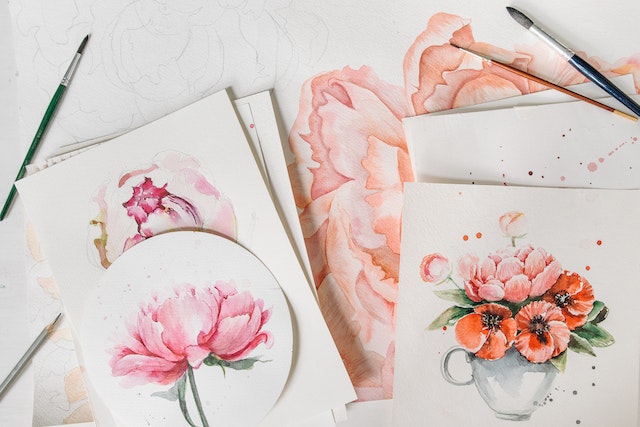
From the simplest flower in the field to the most elaborate cityscape, watercolours can do it all. The vintage technique is still popular because of its subtle beauty, grace, airiness and tenderness.
What was the first watercolor drawings like?
Primitive artists of the Palaeolithic Period painted in colours very much alike today’s watercolours – natural pigments (soot, ochre and metal oxides) were mixed with natural gelling agents as well as animal blood, milk and water. Thousands of years have passed but the composition of watercolor is the same: colored pigments are converted to the smallest powder and mixed with gum arabic, dextrin, sugar, honey and other sticky substances. Water is used to dilute pigments to a suitable consistency. You can paint with watercolour very densely or dilute it to almost transparent glaze layers. Paper, the main medium for watercolours, is often a full member of the painting, peeping out from under the layer of colour. Also you can paint with watercolor on fabric (silk), primed canvas, parchment and even ivory – miniature watercolor portraits on ivory were very fashionable in the XIX century. Watercolour is beautifully combined with charcoal, sanguine, ink, ink, pastel, gouache and other materials.
What is the history of watercolour drawing?
Watercolour was known in ancient Egypt and was used to add whitewash and paint on papyrus. In India and Persia, watercolours were used for beautiful miniatures. Chinese and Japanese artists worked with transparent ink and paints, laying the foundation of modern painting techniques. Medieval European craftsmen created book miniatures using watercolours, gouache and gilding. Albrecht D
Hey welcome to my blog . I am a modern women who love to share any tips on lifestyle, health, travel. Hope you join me in this journey!

Speak Your Mind